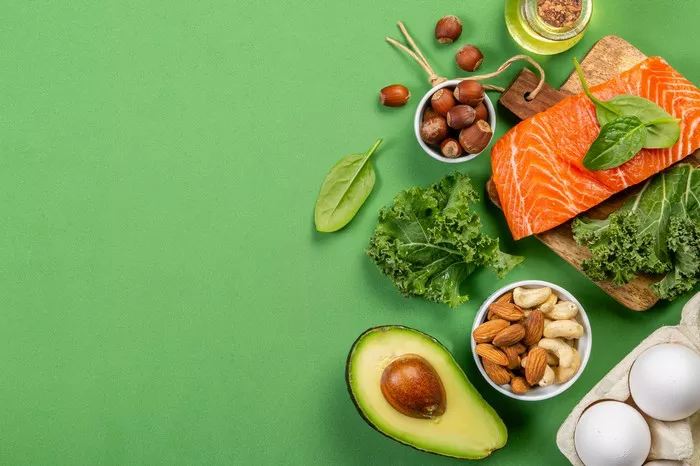Milk is a staple in many diets, providing essential nutrients and acting as a base for various dishes. However, not all foods and beverages play well with milk due to potential digestive issues, nutrient absorption interference, or flavor clashes. To make the most of your dairy consumption, it’s important to be mindful of what should not be eaten with milk. Let’s explore some food combinations that might lead to discomfort or diminished nutritional benefits when paired with milk.
1. Citrus Fruits: Acidic Reactions
Citrus fruits, such as oranges, grapefruits, and lemons, are highly acidic. When consumed with milk, the acid in these fruits can curdle the proteins in milk, leading to an undesirable texture and taste. The curdling effect may cause digestive discomfort in some individuals. To avoid these reactions, it’s best to separate citrus fruits from milk-based products.
2. Pomegranate: Antioxidants and Calcium Clash
Pomegranate is known for its antioxidant-rich properties. However, the tannins found in pomegranate can hinder the absorption of calcium from milk. Calcium is a crucial mineral for bone health, so consuming these two together might limit the benefits of calcium intake. If you’re looking to enjoy both pomegranate and milk, consider spacing them out to maximize nutrient absorption.
3. Spinach and Leafy Greens: Oxalates and Calcium Binding
Leafy greens, including spinach, are packed with vitamins and minerals, but they also contain oxalates. Oxalates can inhibit the absorption of calcium by forming insoluble compounds. Consuming spinach with milk can lead to reduced calcium absorption. If you’re aiming to get the most out of your calcium intake, it’s better to pair milk with foods that don’t interfere with its absorption.
4. Cereal: Impaired Nutrient Absorption
While cereal and milk seem like a classic breakfast combination, it’s worth considering the nutritional implications. Some cereals contain phytic acid, which can bind to minerals like calcium and zinc, reducing their absorption. Additionally, the fiber in certain cereals might slow down the digestion of milk, potentially causing discomfort. Opt for cereals that are lower in phytic acid or consider consuming them separately.
5. Meat and High-Protein Foods: Digestive Challenges
Combining high-protein foods like meat with milk can be taxing on the digestive system. Milk contains casein, a protein that requires specific enzymes for digestion. The presence of other proteins, like those found in meat, can slow down the digestion process and lead to discomfort or bloating. To aid digestion, it’s advisable to avoid pairing meat and dairy in the same meal.
6. Spicy Foods: Digestive Sensitivity
Spicy foods and dairy might not be the best combination for those with sensitive stomachs. Spices can stimulate stomach acid production, potentially causing discomfort or heartburn when consumed with milk. If you enjoy spicy dishes, consider consuming them separately from milk-based products to prevent digestive distress.
7. Sweets with High Sugar Content: Flavor Overload
Pairing milk with foods that are excessively sweet, such as sugary cereals or very sweet desserts, might lead to flavor overload. The richness of milk combined with overly sweet foods can result in a cloying taste that might not be as enjoyable. Opt for balanced flavor pairings that complement each other without overwhelming the palate.
8. Salty Snacks: Sodium and Calcium Interaction
While not directly harmful, consuming salty snacks like potato chips or pretzels with milk might not provide the most balanced nutritional experience. High-sodium foods can interfere with calcium retention, potentially impacting bone health over time. For a more nutrient-friendly snack, consider pairing milk with whole grains or fresh fruits.
9. Dairy and Iron-Rich Foods: Limited Absorption
Calcium can interfere with the absorption of non-heme iron, the type of iron found in plant-based foods like spinach and lentils. Consuming dairy and iron-rich foods together might limit the absorption of iron. If you’re aiming to boost your iron intake, it’s wise to focus on consuming iron-rich foods separately from dairy products.
10. Tea: Catechins and Proteins Clash
Tea, especially black tea, contains compounds called catechins that can bind to proteins. When paired with milk, the catechins in tea can interact with milk proteins, potentially reducing their health benefits. If you enjoy tea with milk, consider opting for herbal teas that don’t contain catechins.
11. Eggs: Protein and Calcium Interaction
Eggs are a protein-rich food, and like meat, they can interact with the proteins in milk during digestion. The simultaneous consumption of eggs and milk might lead to digestive discomfort for some individuals. Separating these two protein sources can help prevent any potential digestive issues.
12. Yogurt with Antibiotics: Probiotic Interference
While yogurt itself is a dairy product, it’s worth noting that consuming yogurt with antibiotics might interfere with the effectiveness of probiotics. Antibiotics can disrupt the balance of gut bacteria, which probiotics aim to restore. To ensure the benefits of probiotics, consider consuming yogurt at a different time from when you’re taking antibiotics.
Conclusion
While milk is a versatile and nutritious ingredient, certain food combinations may not be ideal due to potential digestive issues, nutrient absorption interference, or flavor clashes. Being mindful of what should not be eaten with milk can help you optimize your meals and enhance your overall dining experience. By choosing complementary and balanced pairings, you can make the most of the nutritional benefits that milk and other foods offer individually. Whether you’re savoring a glass of milk, enjoying a bowl of cereal, or incorporating dairy into your recipes, thoughtful food pairing can contribute to your overall well-being and satisfaction.























